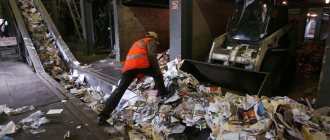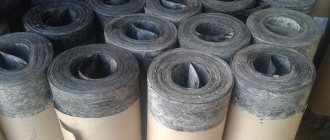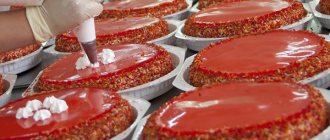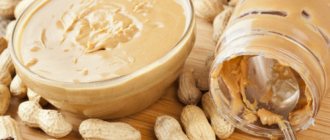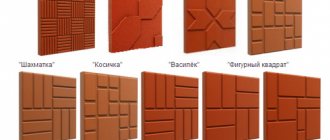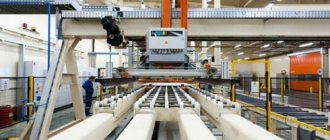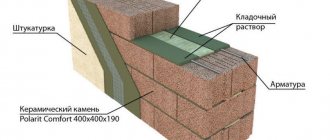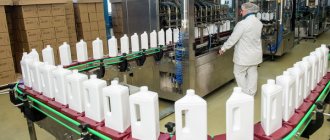Paper napkins have always been in demand among consumers. Therefore, opening a workshop for the production of these products will be a profitable decision. Since one of the components of a successful business is the correctly selected equipment, before purchasing machines you should familiarize yourself with their features and operating principles.
Registration
To produce branded goods, it is best to register an LLC . But the most difficult thing will not be registration or even obtaining permits from the fire inspectorate and SES.
To protect yourself from competitors and make your products recognizable, you need to register a trademark. This is done by FIPS (Federal Institute of Industrial Property).
The procedure itself can take up to one and a half years, so you need to work on the logo and design of the trademark, as well as submit an application in advance. The cost of all services related to registration ranges from $750 to $1,100.
What are they made from?
Currently, two types of nonwoven materials are made:
- spanbod - thin polymer fibers;
- spunlace - synthetic natural fibers.
The base includes aromatic fragrances, surfactants, glycerin, oils, 90% aqueous or alcoholic solution, and natural plant extracts. The included ingredients depend on the type of product. For example, an alcohol solution is not included in the product line for small children, so as not to irritate the skin of infants. For impregnation, plant decoctions, antiseptics, moisturizing creams, and oils are used.
Room
Making napkins requires minimal space. 60-70 square meters is enough . The plant should consist of a workshop (we take into account only one production line) and a warehouse for storing raw materials and finished napkins. Its rent will cost approximately 600-900 dollars per month.
Premises requirements
- Ceilings from 3 meters ;
- Electrical network 380 V ;
- Availability of sewerage, ventilation system, water supply, fire system.
Don’t forget that repairing and preparing the premises for work will also require investment: about $1,000.
Staff
The production of wet wipes can cost a minimum staff, and this allows you to save on wages. But each employee must have a medical record - this is a mandatory requirement of the SES.
To maintain the process, you will need at a minimum:
- manager - 1 person;
- technologist - 1 person;
- designer - 1 person;
- workers per line - 3-4 people.
The task of the technologist is to monitor compliance with the technology and the operation of the equipment. The designer is called upon to constantly change, improve the design of products, look for new forms, and be at the forefront of the market in this area in order to maintain the competitiveness of the company in the face of constant changes. This is a very important person in the company, on whom the growth and prosperity of your business depends.
Wet wipes production technology
Production consists of several stages. First, the nonwoven material (raw material) together with the packaging material enters the same machine.
At this stage, a design drawing is applied to the packaging. Next, the packaging material is positioned in such a way as to form a “sleeve” into which future napkins are placed. At the same time, the product is impregnated with cleansing and aromatic agents.
The soldering machine cuts the resulting sleeve into pieces and joins the edges of the package using a heated knife. Then all that remains is to package the resulting products.
Reviews
Larisa: “There are really a lot of napkins on store shelves. But most of them came from abroad. With the same quality of material, lower prices can be achieved through local production, which will definitely appeal to customers.”
Oleg: “Today, baby wipes are in greatest demand. But if you pay attention to less common varieties, for example, for glasses, glasses, furniture, facial care, then this will save you from competitors.”
Semyon: “In distant regions, the difficulty of production is that you have to overpay for delivery and purchase of raw materials. And this affects the cost of the product. Sometimes it makes sense to immediately bring a finished product from afar rather than order all the ingredients from there.”
Equipment for the production of wet wipes
It is most advisable to use an automatic or semi-automatic equipment line. It includes:
- Automatic cutting machine;
- Saturation chamber;
- Packing and sealing machine.
To increase production volumes, it is not necessary to purchase several lines.
You can select equipment that can control several production flows simultaneously.
The cost of the line starts at $1300-1400 and can reach 7-10 thousand dollars for more powerful equipment. It is worth paying attention to equipment from the following manufacturers:
- GDH MACHINE (Türkiye);
- ALKE Machinery (Türkiye);
- Chuangda (China);
- Dachang (China);
- Usulpak (China);
- STANPROM LLC (Ukraine);
- Omsk Paper Mill LLC (Russia);
- Omet (Italy).
The most attractive price is for equipment made in Turkey and China. You can also try looking for used machines to save money 20-30%.
More about cellulose
Cellulose is fiber or the main building material of the plant world, which forms the intercellular walls of trees and higher plants. The solid dry state is natural for products made from cellulose. In a dry environment, microorganisms and bacteria are not able to develop.
Features of toilet paper made from cellulose
Toilet paper made from cellulose (deciduous or bleached softwood) is a product that belongs to the highest grade of paper and has excellent physical properties. It is made by boiling. The features of cellulose toilet paper include the following:
- environmentally friendly and natural - it does not contain lead, chlorine, or harmful impurities that may be present in products made from waste paper;
- soft to the touch;
- is able to completely dissolve in water, which allows it not to clog the sewer;
- perfectly absorbs – has the ability to absorb at a high level;
- strength;
- a varied number of layers - there can be one, two or many layers;
- improved appearance - pure color (white, blue, green, yellow, pink, peach, with or without a pattern).
About the key advantages of cellulose napkins
Among the advantages that cellulose paper napkins are famous for are the following:
- absence of lint and streaks on the surface after treatment with a napkin;
- high level of hygroscopic properties;
- strength, softness, elasticity;
- antibacterial natural properties - prevents the spread of unpleasant odors and germs;
- cellulose structure;
- natural material (environmentally friendly, does not cause allergies).
Technical characteristics of napkins made from cellulose
If we talk about the technical characteristics of cellulose napkins, they differ in the following parameters:
- the quality of the raw materials that were used in production - if the cellulose is not of high quality, then, being dry, it can crumble. High-quality cellulose fibers are tightly bonded to each other naturally and do not require additional fixation. Such cellulose is best able to absorb moisture and has a high level of strength and elasticity;
- size - the larger the napkin, the longer it will last and the more moisture it will be able to absorb;
- thickness - the thicker the napkin, the higher its absorbent properties.
Production of toilet paper base from cellulose
The production of toilet paper base is the initial stage of making toilet paper itself. As a rule, the raw materials used for these purposes can be of various types. Each of them is environmentally friendly and scientifically tested.
Wood is the first type of raw material used in the production of base paper. To facilitate the process of working with this material, it is brought to a state of homogeneous mass. The next stage of production involves the use of scientific methods by specialists to give the paper softness and the ability to quickly decompose in water. This is to ensure that the drain does not become clogged when toilet paper is flushed from the toilet. To achieve this effect, an extremely thin layer of paper is cut using special equipment. In addition, this gives the paper the ability to stretch without breaking, that is, it acquires the necessary level of strength. The production of toilet paper base from a natural material such as wood guarantees a high quality product, and, consequently, a relatively high price. After all, only valuable species of wood are used in the manufacturing process. Thanks to this, the base paper is elastic, soft and durable.
About the features of producing toilet paper base from recycled materials
Recycled raw materials are another option for the material from which toilet paper base is produced. It is used as waste paper, which has been previously cleaned of foreign impurities and crushed. During the purification process, process or recycled water is used, and to make the result even better, the raw materials go through purification with running water from lakes, rivers, and mountain streams. The properties of finished toilet paper directly depend on the quality of cleaning.
The second stage of producing base paper from recycled materials involves mixing the crushed mass with water, and then drying it on a special drum, which is heated to a temperature of 110-115˚C. After a certain time, the production of toilet paper base is near completion. Its final step is to peel off the thin layer and then package it so that the paper can be used for hygiene purposes. The price of toilet paper made on this basis is several times lower than that for the production of which wood was used.
Types of toilet paper resulting from
When fully finished products are released, the buyer is faced with a choice: which product to choose? After all, today a huge assortment is presented in household stores and supermarkets. Differences may lie in the packaging - whether it is sold individually or contains several rolls, as well as in color, number of layers, etc.
If you are interested in the production of toilet paper base, or you would like to open a business producing this hygiene product yourself, contact Dobry Motok!
Toilet paper and paper napkins made from cellulose: more about base paper
Base paper is a material that is used as a base for making toilet paper. Need quality base paper? Contact Dobry Motok.
As a rule, base paper for toilet paper is divided into two types:
- cellulose (1 layer or 2 layers);
- waste paper
The base paper is produced in the form of rolls, and at the customer’s request can be packaged in plastic packaging.
Today, to make toilet paper, namely its base, wood and waste paper can be used as raw materials. Regardless of which one is used, the beginning of the process is to convert the raw material into a paper base that is suitable for hygiene applications.
The process of making base paper from wood
If the raw material for the base paper is wood, then at the first stage the latter is processed to a homogeneous mass. In order for the base paper to be used to make toilet paper used for hygiene purposes, the production technology must be adjusted. For example, introduce the paper creping stage. This is done so that it becomes soft, elastic, and can quickly dissolve in water.
What is creping? This is a process in which thin layers are cut from workpieces using a special machine. Thanks to this, the thickness of the paper base reaches its minimum, and its elasticity reaches its maximum.
If you subsequently plan to produce hygienic and decorative paper that can stretch without tearing, creping will come in handy.
The degree of elasticity inherent in the base paper directly depends on the type of wood that was used to make it. Therefore, if it is necessary to produce very elastic and soft paper, valuable types are usually chosen. Consequently, the most economical and rational solution would be to use recycled materials for the production of base paper.
Features of the production of base paper from recycled materials
If the base paper is made from recycled materials, then at the first stage of its production, waste paper is processed. This process consists of purifying raw materials from foreign objects, various impurities, as well as grinding and soaking them. It is the quality of cleansing that is given the greatest attention, because it determines what properties the final finished product will have. Namely, the softness, whiteness and cost of toilet paper. To clean raw materials, two types of washing are usually used: flow and reverse. The first is used for final cleaning, and the second is used several times.
After the recyclable materials have been cleaned and soaked, they are placed in a grinder, then the resulting mass is diluted with water until the concentration is 0.5%. After this, the raw material is placed on a screen drum, then dewatered and transferred to a drum for drying. Steam is supplied to the surface of the latter under pressure from a boiler, the temperature of which is 115 °C. The paper pulp is dried until its moisture level reaches 40%. Afterwards, the thin layer is removed using a scraper. As a result of all these technological processes, a base paper is obtained that can be used for the production of toilet paper.
Raw materials for the production of wet wipes
To make napkins, several different types of raw materials are used, the quality of which determines the quality of the finished product.
The most accessible and simple materials are considered to be thermal bond and spunbond . This is a material based on propylene fibers.
Higher quality products are made from spunlace and airlaid . This is a softer and more durable material that gently cleanses the skin.
The most inexpensive base (thermobond) costs around $500-700 per ton.
Impregnation for napkins usually contains distilled water, glycerin, perfume compositions, sometimes vitamins, and preservatives. It is not so easy to make it yourself, so it is better to contact manufacturers of impregnation for wet wipes. One napkin takes about 1 ml, so if you purchase in bulk, you will save yourself a lot of hassle with making it yourself.
You can purchase impregnations from the following companies:
- "2D-Farma";
- "ISP Biochema Schwaben";
- "Univer";
- "Penta";
- "Sapsan" and others.
Packaging for napkins is made of polyethylene, lavsan, polypropylene to prevent the napkins from losing moisture.
Costs and return on business
Estimated costs for starting a business:
- purchasing equipment will require costs of at least 75,000 rubles;
- marketing and advertising costs in the region of 100,000 rubles;
- purchase of consumables – 750,000 rubles;
- salary for employees, at least 70,000 rubles;
- design and new solutions – 200,000 rubles;
- Other costs include costs of approval and certification.
Total costs can range from 100 to 500 thousand rubles, but even in the case of a small turnover, the payback threshold can actually be overcome in a year .
Review of China Automatic Wet Wipes Production Line

